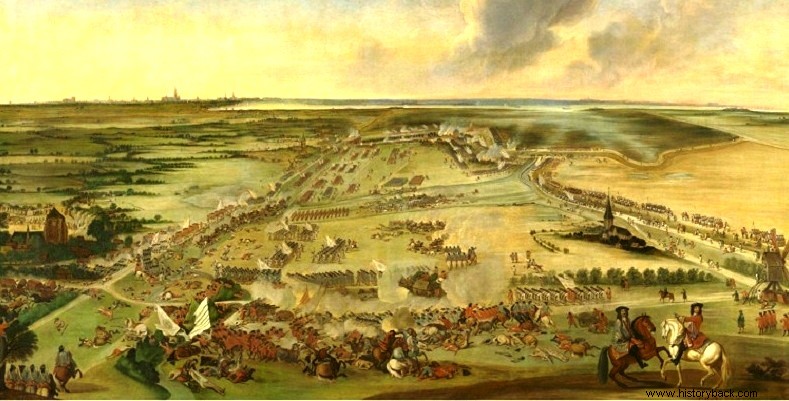
The battle of Ekeren is one of the most unknown, but also the most interesting of, in fact, the second world war of humanity, the War of the Spanish Succession. It was a battle that logic said would be won by the many by annihilating the few. But it didn't happen like that.
The War of the Spanish Succession it broke out in 1700, essentially, when the arrogant French king Louis XIV wanted to put Spain under French control after the death of its king, placing his grandson on the Spanish throne.
This meant in practice that a de facto powerful alliance would be created that could dominate all of western Europe. Responding to this possibility, England, Austria, Holland, Prussia and other smaller countries allied themselves against the French. The most important theater of operations was that of Flanders.
Maneuvers
In May 1703, the great English general John Churchill, then 1st Duke of Marlborough and commander-in-chief of the allied forces, decided to occupy Ostend in present-day Belgium. For this purpose, he concentrated his forces there, leaving only small covering forces in the wider area.
The Dutch general Jacob van Obdam with about 10,693 men had taken up positions at Ekeren about 7 km north of Antwerp. Second in the hierarchy was the also Dutch lieutenant general Frederik Johan van Slangenburg.
But the French had spotted the small Dutch force and their leader, Marshal Viguerois, decided to attack. Villeroy had 40,000 men, French and Spanish, the latter under the Marquis of Bedmar.
The battle begins
Early in the morning of June 30, 1703, the French arrived in the area. Vigerois, seeing the small force of the opponents, decided to trap them and destroy them. So he ordered a division of dragoons (light cavalry as the case may be, but also mounted infantry at that time) to move to the south of the Dutch in order to cut off any escape route.
At the same time, his other forces surrounded the Dutch from the front and from the sides. The Dutch, realizing the trap, tried to escape. Obdam ordered his cavalry to try to break the cordon but it was already too late. An iron ring had formed around his small power.
When the Dutch were repulsed the French and the Spanish attacked. But they didn't succeed in the slightest. Maneuvering on internal lines constantly, the lesser Dutch always managed to have enough forces in the threatened sectors of their "quadrilateral" front. The method of fire used by the Dutch (fire by "platoons") also played an important role. However, the battle was dragging on and ammunition was running low. Nevertheless, the Dutch continued to fight with bayonets.
Splitting the cord
However, another problem arose. General Obdam had disappeared... What had happened; Simply Obdam had completely lost his courage and wearing French uniform QUIT his fighting men and with 30 of his followers managed to escape.
Returning he even drew up a report declaring the destruction of his power from multiple enemies. But the force he commanded had not been destroyed, despite all logic. Lieutenant General Slangenburg had kept his courage and taking over the administration decided to attempt a new division of the cord.
The Dutch chose to attack the village of Orderen. They passed through irrigation canals and streams from which the French did not expect an attack, and charged with their bayonets with the force of desperation. The battle in the village was particularly bloody, but eventually the Dutch managed to escape as the other French and Spanish forces were slow to move to strike them in the rear.
Over 8,000 men were rescued by the Dutch force. The French, who claimed victory, suffered nearly 3,000 casualties. The otherwise "defeated" Dutch captured a French cannon, and 17 banners and flags. The French had 1,200 killed, as many wounded and many missing. The Dutch had 700 dead, 1,000 wounded and 700 prisoners. Obdam, of course, was expelled from the army . However, he was not punished as he deserved.
